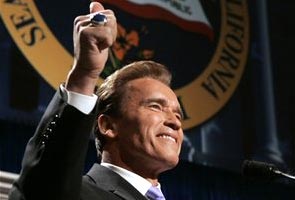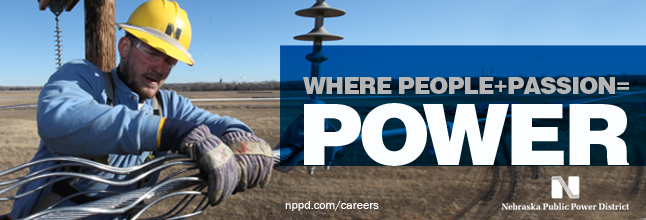Cornhusker Option: How Nebraska Citizens Took Control of Their Energy Grid
FEBRUARY 5, 2015 BY 21WIRE
21st Century Wire says…
Should all states have privatized power grids? Considering the sharp rise in consumer prices (400% in some cases) since the energy deregulation and privatization revolution of the 1990′s, questions of ownership are now resurfacing in the US and parts of Europe. Is there any way to reverse this trend (see some solutions, please see the full report on Nebraska’s success story below).
There are alternatives to the current privatized energy cartel system, but to explore these, we first need to understand how we got to to this current crisis. Amazingly, most people have already been brainwashed enough to believe that there is no other alternative to consumer power and energy than the current system of corporate cartel ownership and legalized price fixing.
Enron’s Legacy Lives On
Much was made by the media about the collapse and fraud of the notorious Enron Corporation, and despite all the condemnations and attention, no one seemed to protest when similar corporations moved in to take over their business contracts, and these corporations continued to fix and raise prices beyond average affordability. Profits soared, however, as the private cartels (and their banking financiers) managed to effectively takeover what public utilities had built over the previous century.
 Most people are unaware that one of the key players behind the scenes in helping Enron operate in California was its soon-to-be governor Arnold Schwarzenegger, who cut a secret deal with criminal financiers.
Most people are unaware that one of the key players behind the scenes in helping Enron operate in California was its soon-to-be governor Arnold Schwarzenegger, who cut a secret deal with criminal financiers.
In Britain, at around the same time, the same cartels took control of the power grid from the state in a sweet heart deal, which also ended driving up prices for consumers. Enron was there, too. In both cases, the privatization was sold to an unquestioning media as a solution that would “provide more competition and lower prices for consumers”. Of course, the opposite happened.
The question remains: is there any way for a state or nation to reclaim its power grid from the corporations and bankers who took it?
There are answers, and possibilities…

Thomas Hanna
Alternet/YES! Magazine
In the United States, there is one state, and only one state, where every single resident and business receives electricity from a community-owned institution rather than a for-profit corporation.
It is not a famously liberal state like Vermont or Massachusetts. Rather, it is conservative Nebraska, with its two Republican Senators and two (out of three) Republican members of Congress, that has embraced the complete socialization of energy distribution.
Should all states have privatized power grids? Considering the sharp rise in consumer prices (400% in some cases) since the energy deregulation and privatization revolution of the 1990′s, questions of ownership are now resurfacing in the US and parts of Europe. Is there any way to reverse this trend (see some solutions, please see the full report on Nebraska’s success story below).
There are alternatives to the current privatized energy cartel system, but to explore these, we first need to understand how we got to to this current crisis. Amazingly, most people have already been brainwashed enough to believe that there is no other alternative to consumer power and energy than the current system of corporate cartel ownership and legalized price fixing.
Enron’s Legacy Lives On
Much was made by the media about the collapse and fraud of the notorious Enron Corporation, and despite all the condemnations and attention, no one seemed to protest when similar corporations moved in to take over their business contracts, and these corporations continued to fix and raise prices beyond average affordability. Profits soared, however, as the private cartels (and their banking financiers) managed to effectively takeover what public utilities had built over the previous century.
 Most people are unaware that one of the key players behind the scenes in helping Enron operate in California was its soon-to-be governor Arnold Schwarzenegger, who cut a secret deal with criminal financiers.
Most people are unaware that one of the key players behind the scenes in helping Enron operate in California was its soon-to-be governor Arnold Schwarzenegger, who cut a secret deal with criminal financiers.In Britain, at around the same time, the same cartels took control of the power grid from the state in a sweet heart deal, which also ended driving up prices for consumers. Enron was there, too. In both cases, the privatization was sold to an unquestioning media as a solution that would “provide more competition and lower prices for consumers”. Of course, the opposite happened.
California’s story is a classic example. The first step is load the system with debt so that the government and institutions will be vulnerable to a fire sale later. Step two is deregulation, where corporation lobby lawmakers relax anti-trust, mergers, acquisitions – so that the cartel can buy up public utilities. Step three is to create a new class of middlemen – futures traders who can distort the entire market, create artificial scarcity and drive up prices. In 1997, Pacific Gas & Electric (PG&E) reorganized as a holding company, PG&E Corporation. In the late 1990s, under electricity market deregulation they sold-off most of their natural gas power plants, but held on to its hydroelectric plants and the Diablo Canyon Nuclear Power Plant. Suddenly, the state had to buy its power from outside energy generators – at wildly fluctuating prices thanks to the new class of energy speculators like Enron – but still forced to sell its power to consumers at costs fixed by the state’s utility board. The newly formed private ‘market’ for electricity was completely controlled by the Enrons, and with the help of its other corporate cartel partners, artificially drove prices upwards. This led to many state and municipal organizations unable to pay their their new electricity bills, PG&E was on the verge of bankruptcy in the wake of a full-blown California electricity crisis. With a power shortage, energy providers were forced to begin instituting rolling blackouts which began on January 17, 2001. (Source: Wiki)
Enron’s fraud carried on over state borders too. Portland General Electric worked with Enron to fix the market. Oregon news reported then, “PGE traders played a role in helping their Enron counterparts loop electricity from California into the Northwest and then back again — creating false congestion on California’s energy grid and the threat of electricity shortages.”The question remains: is there any way for a state or nation to reclaim its power grid from the corporations and bankers who took it?
There are answers, and possibilities…

Thomas Hanna
Alternet/YES! Magazine
In the United States, there is one state, and only one state, where every single resident and business receives electricity from a community-owned institution rather than a for-profit corporation.
It is not a famously liberal state like Vermont or Massachusetts. Rather, it is conservative Nebraska, with its two Republican Senators and two (out of three) Republican members of Congress, that has embraced the complete socialization of energy distribution.
In Nebraska, 121 publicly owned utilities, ten cooperatives, and 30 public power districts provide electricity to a population of around 1.8 million people. Public and cooperative ownership keeps costs low for the state’s consumers. Nebraskans pay one of the lowest rates for electricity in the nation and revenues are reinvested in infrastructure to ensure reliable and cheap service for years to come.
“There are no stockholders, and thus no profit motive,” the Nebraska Power Association proudly proclaims. “Our electric prices do not include a profit. That means Nebraska’s utilities can focus exclusively on keeping electric rates low and customer service high. Our customers, not big investors in New York and Chicago, own Nebraska’s utilities.”
Payments (in lieu of taxes) from the state’s publicly owned utilities exceed $30 million a year and support a variety of social services throughout the state—including the public education system.
How the state went public
Nebraska has a long history of publicly owned power systems dating back to the beginnings of electrification in the late 1800s. Initially, these co-existed with small private utilities. However, in the post-World War I era, large corporate electric holding companies backed by Wall Street banks entered the market and began taking over smaller private and municipal systems.
Using their financial and political power, these corporations dramatically consolidated the power industry in Nebraska and attempted to stop new cooperatives and publicly owned utilities from forming. During this time more than one-third of the state’s municipal utilities were sold to private corporations.
Tired of abusive corporate practices, in 1930 residents and advocates of publicly owned utilities took a revenue bond financing proposal straight to the voters, bypassing the corporate-influenced legislature which had previously failed to pass similar legislation. It was approved overwhelmingly—signaling both popular support for publicly owned utilities in the state and also the beginnings of their resurgence.
Led by powerful Nebraska Senator George W. Norris—the driving force behind the publicly owned Tennessee Valley Authority—a series of state and federal laws were passed including: the state’s Enabling Act (1933), which allowed 15 percent of eligible voters in an area to petition for a decision on a publicly owned utility; the Public Utility Holding Company Act (1935), which forced the breakup and restructuring of corporate electricity monopolies; and the Rural Electrification Act (1936), which provided financing for rural electricity projects. By 1949, Nebraska had solidified its status as the first and only all-public power state.
Every Nebraskan can help make decisions
Local control and the possibility for democratic participation are defining features of Nebraska’s publicly owned electricity system. At the ground level, public utilities and cooperatives are run by publicly elected power district boards, cooperative boards, or elected city councils (often through appointed boards). These bodies establish budgets, establish service standards and policies, and set prices.
Regularly scheduled meetings of power boards and councils are open to public involvement and comment. Should they so wish, every Nebraskan has the opportunity to become involved in the decisionmaking of their local electricity provider.
One such example relates to the increasing use and proliferation of renewable energy facilities. While the state remains heavily reliant on coal and nuclear sources to provide low-cost energy to consumers, interest in renewable energy—primarily wind—has taken off in recent years.
In 2003, electricity consumers, many of whom drove more than 100 miles for the event, participated in an eight-hour deliberative polling survey for the Nebraska Public Power District (NPDD), a public corporation owned by the state of Nebraska that supplies energy to 600,000 people via local, publicly owned utilities and cooperatives.
In 2003, electricity consumers, many of whom drove more than 100 miles for the event, participated in an eight-hour deliberative polling survey for the Nebraska Public Power District (NPDD), a public corporation owned by the state of Nebraska that supplies energy to 600,000 people via local, publicly owned utilities and cooperatives.
The topic at hand was the potential addition of more than 200 MW of wind energy by 2010. Ninety-six percent of the participants supported the wind project, with 50 percent agreeing it was the right size and 36 percent wanting it expanded (compared to just 3 percent who wanted it reduced).
In addition to its other wind power facilities, in 2005 NPDD began operating the Ainsworth Wind Energy Facility, the nation’s second-largest publicly owned wind farm consisting of 36 turbines generating up to 59.5 MW of energy. In 2011, the state’s energy plan acknowledged both that power generation from wind had doubled every two years since 2006 and that developing just 1 percent of the potential energy from wind in Nebraska would satisfy the state’s entire peak demand…
Continue this article at Alternet
Continue this article at Alternet
No comments:
Post a Comment